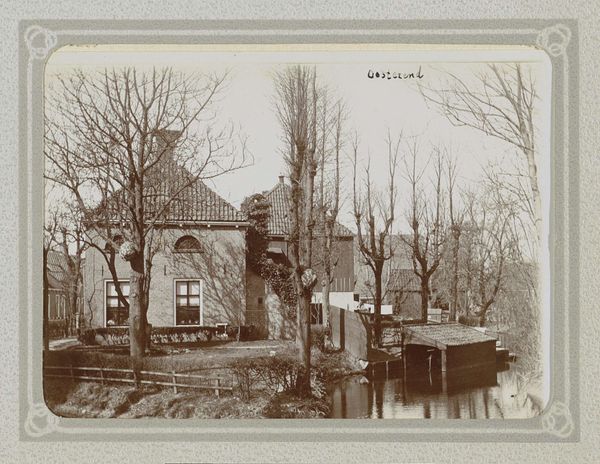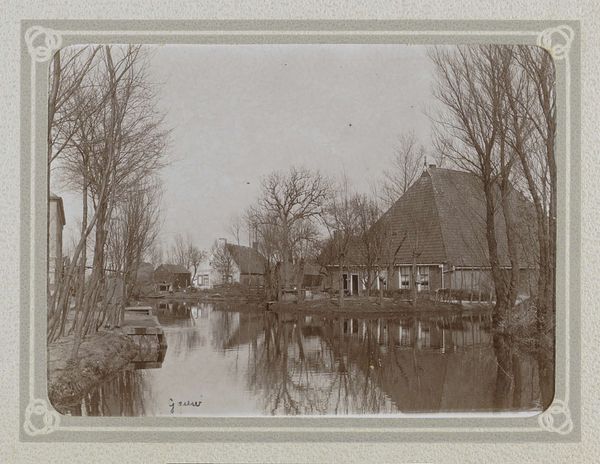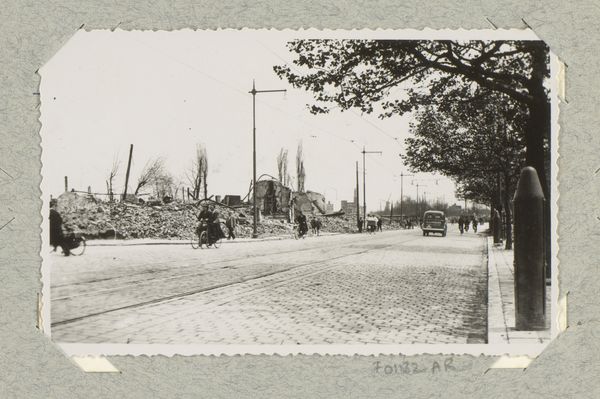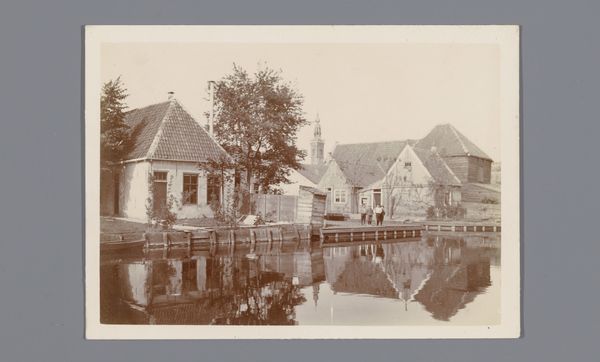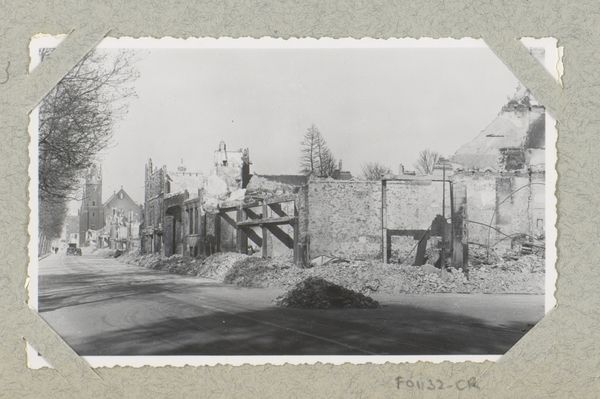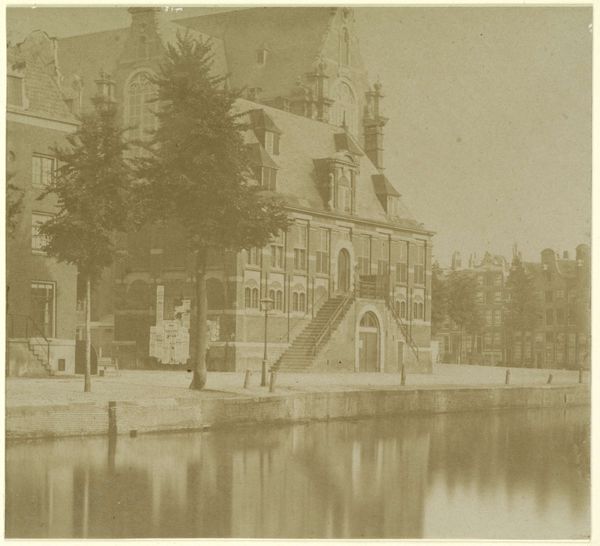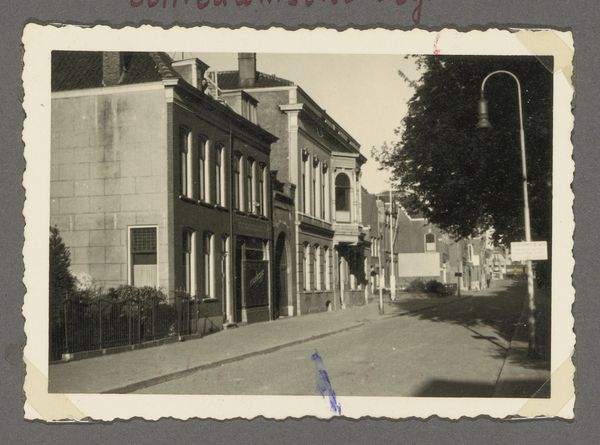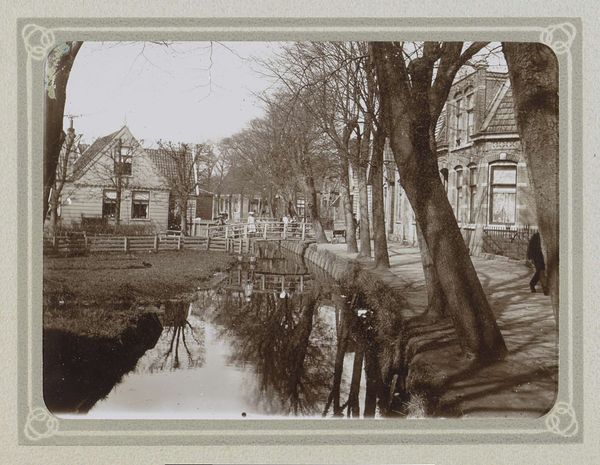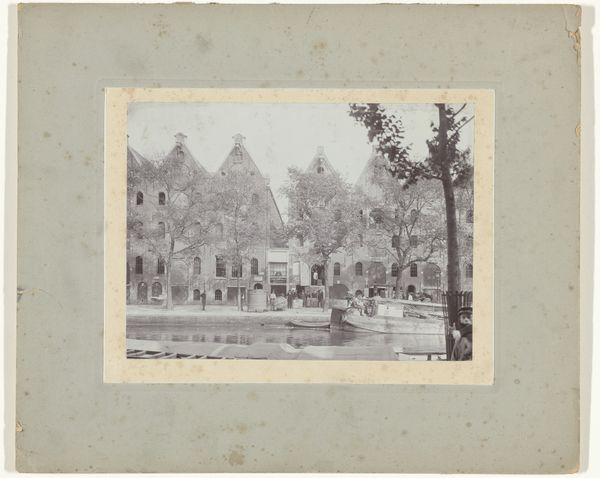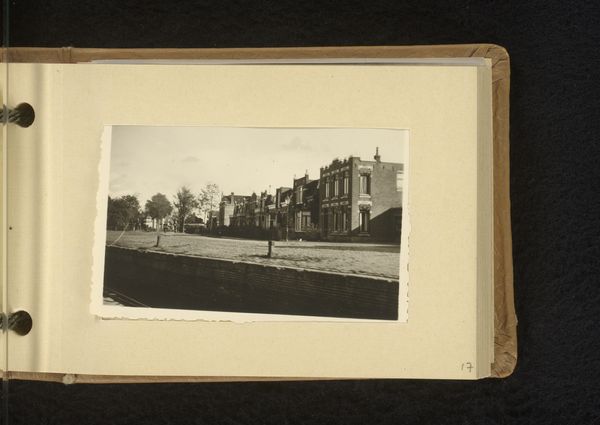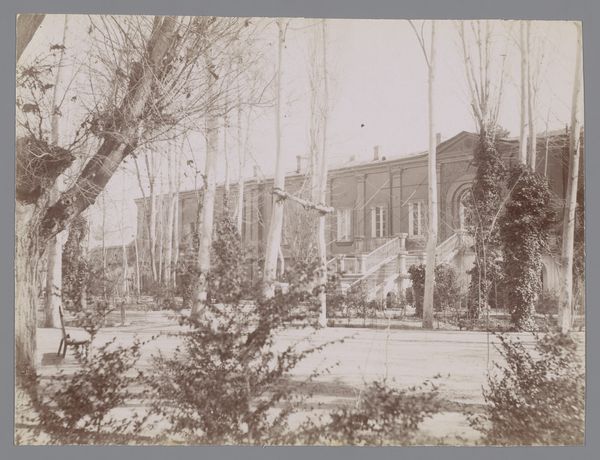
Dimensions: height 88 mm, width 136 mm
Copyright: Rijks Museum: Open Domain
Editor: Here we have "Ruïnes aan de Mauritsweg te Rotterdam" – Ruins on Mauritsweg in Rotterdam – a gelatin-silver print taken by J. Nolte sometime between 1940 and 1945. The devastation captured is palpable; you can almost feel the weight of what happened. What do you see in this piece, considering it’s not just an image, but an object? Curator: It's crucial to look at this image through a materialist lens, examining the gelatin-silver print itself. Consider the socio-economic implications of photography during wartime: rationing of materials, the labor involved in developing these prints, and the consumption of these images as both historical record and propaganda. Notice how the artist uses photography, often considered a purely documentary medium, to almost romanticize ruin. How does the choice of gelatin-silver print affect our perception of this subject matter, knowing it has historical context? Editor: It makes you think about the act of documenting. Someone had to be there, choosing to capture this specific angle and moment. It shifts from a scene of complete despair to one with intent, right? Curator: Exactly. And intent always ties back to production and the material conditions. The gelatin-silver print allows for a specific tonal range, capturing textures and details that serve a particular narrative. We need to remember photography as industry—materials acquired, processes enacted. Who benefits from these images? How are they distributed and consumed? Answering those questions places the artwork within a broader web of socio-economic relationships. Editor: I never really thought about the 'who benefits' question when looking at something like this. I'm understanding how the creation of art is connected to social and economic structures more than I considered before. Curator: Precisely! By examining these ruins through a materialist lens, we unveil not just the devastation of war but also the networks of power and production that shaped its representation. It gives us something to chew on.
Comments
No comments
Be the first to comment and join the conversation on the ultimate creative platform.
